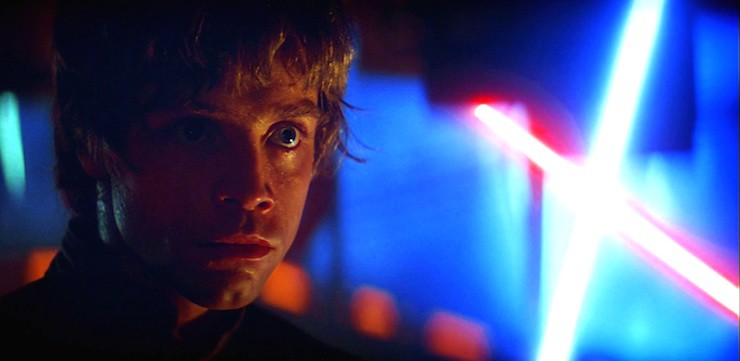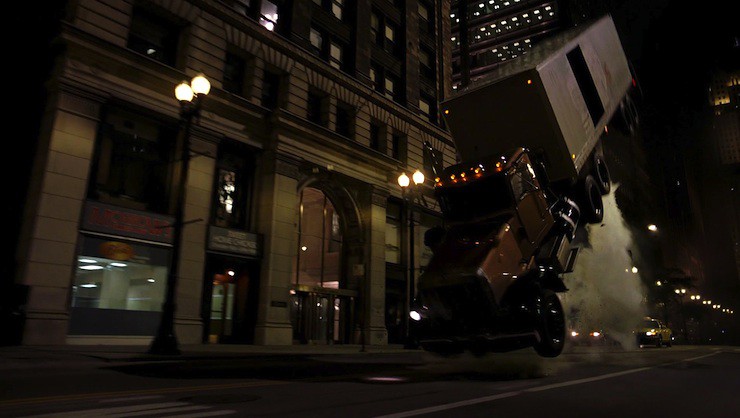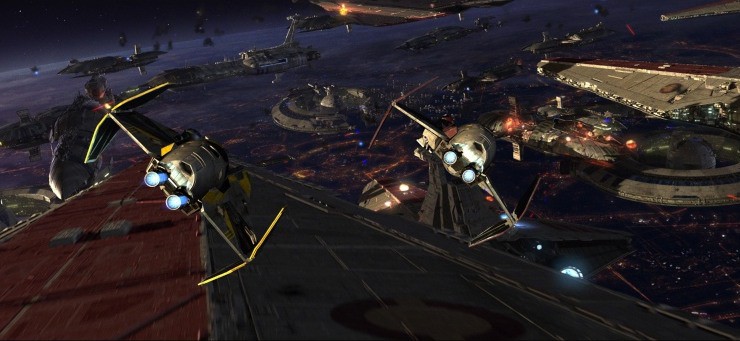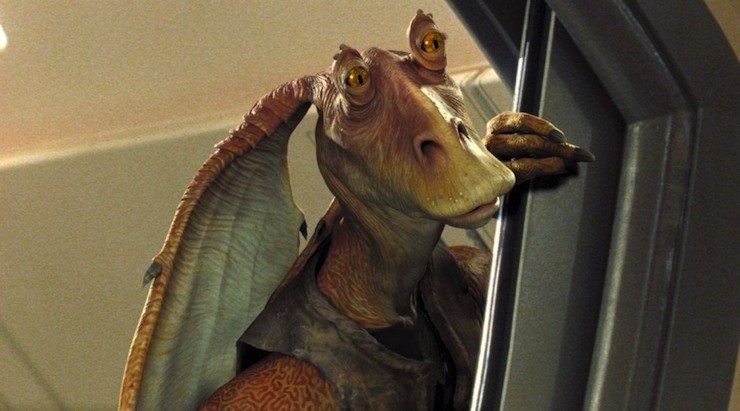The Star Wars panel at the 2015 San Diego Comic Con made one thing clear: J. J. Abrams hates CGI now. If the word “practical” wasn’t being bandied around in geek discussions last week, it is certainly the buzzword of the moment. From “practical effects” to “real sets,” seemingly all anyone had to say about The Force Awakens is that Abrams and company are throwing their computers out of the window because they want to make something real.
But, does everyone really hate CGI as much as we think we do? And if so, why?
Early cinema was all about the innovation of crazy effects. In this amazing mini-documentary on Filmmaker IQ, they point out that the technique of combining multiple mattes—which later became know as Chroma key or more conventionally, “green-screening”—was employed (without a computer) as early as 1898 by the impresario Georges Méliès in his short film “Four Heads Are Better Than One.” (Spoiler alert: he convincingly removes his head in this thing.) Méliès is probably best remembered for creating the awe-inspiring A Trip to the Moon, loosely inspired by the Jules Verne novel From Earth to the Moon. This early feature film was also one of the first science fiction movies ever, and nearly nothing about it looks realistic, nor are half the “special effects” anything we’d refer to as “practical,” particularly in the sense of that word’s contemporary connotation.
In this current context “practical” seems to mean “what you see is what was really there.” That is to say, yes, they really flipped the tractor trailer in The Dark Knight, and yes, Harrison Ford’s stunt-double (Vic Armstrong) did really jump from a horse onto a tank in Indiana Jones and the Last Crusade, etc.
It’s good to remember that the term “special effect” used to apply to anything in film or TV that was difficult to pull off, and before the science fiction film industry’s post-1970s boom, this mostly focused on what we’re now calling “practical” effects. The multiple matte stuff or post-production shenanigans were not super common (and actually downright arty) and something you certainly wouldn’t associate with mainstream Hollywood movies until after 2001 and Star Wars changed the cinematic landscape.
Prior to big budget science fiction/fantasy movies really taking off, special effects mostly equaled the following: models of miniature spaceships, guys in rubber Godzilla suits, explosions on a set, people on wires to provide the illusion of flight, and candy glass that would break in order to make it look like regular glass was breaking. These effects are special because they require a lot of work, and so semantically speaking they’re not very “practical.” When it became more common to add things in post-production during the 80s, effects jargon started to divide. The term “optical effects” became more common for post-production, while effects that were done on-camera during shooting (which we’re calling practical now) were and are sometimes referred to as “mechanical” effects.
A lightsaber fight, for example, combines both schools of effects. In The Empire Strikes Back there are the mechanical effects (again, “practical”) wherein Mark Hamill gets smacked with giant pieces of Styrofoam and wires are used to make his lightsaber levitate, but there also optical (post-production) effects to create the glowing blades of the lightsabers. Get ready for it: your favorite Star Wars thing ever—the lightsaber—was made possible by a post-production optical effect, the precursor of the dreaded CGI.
In the original Star Wars films, the glowing blades of the lightsabers were achieved through a process called rotoscoping, which is similar to the meticulousness of stop-motion but without the puppets. It’s a process by which an image was superimposed onto the film, and had to be added into the scene, frame-by-frame. But as digital technology got better, it rendered this process about as relevant as 8-track tapes are to an iPod owner. And the reason why the lighstabers looks so flawless (for the most part) in the special editions of Star Wars and the prequel films is because CGI was good for this kind of visual/optical effect: it allowed the rotoscoping of the lightsaber blades to be more precise and the overall process was made less time-consuming.
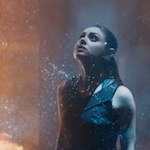
Now, as pointed out by every behind-the-scenes feature on Star Wars ever, the existence of actual shafts are essential to create “realism” in a lightasber fight. They aren’t just fighting while holding empty hilts. There had to be “practical” swords smacking into each other in order for the sword fight to work. But, here’s where the whole microcosm of “real” effects versus “optical” effects gets tricky. In A New Hope, they tried to enhance the lightsaber by the use of reflective blades that created their own light on set which would be captured on camera. This could allow for real light to be reflected on the face of Obi-Wan, for example. But it didn’t work: the reflective material made those early lightsabers brittle and the reflective technique wasn’t consistent enough to make the lightsabers look “real.” In short, one aspect of the “practical” version of the lightsaber effect proved to be really impractical. This is why the lightsabers looks crappier in A New Hope than they do in the subsequent films.
But maybe you know all that and you’re saying to me “Come, come Ryan, you know I enjoy a good lightsaber fight just as much as you do, why are you splitting hairs? We’re angry about the bad kind of CGI. The CGI that happens when the filmmaker (George Lucas) relies on it totally! And everything seems to exist in a computer! It is that kind of CGI against which I rail!” And of course I agree with you and, by extension, with J.J. Abrams. Having a “real” set is probably preferable to a fake one. In fact, I think the Jedi Temple looks more “real” in the cartoon world of The Clone Wars than it does in any of the prequels. But I think what’s revealed there is that we don’t hate CGI for the sake of hating it, we hate it when it looks inconsistent with what we think should be real.
People who grew up in the 80s or 90s might champion model-making and cinematic pyrotechnics for their own personal/and or emotional reasons, but it’s good to remember that CGI flourished because it solved certain economic and logistical problems. It’s also allowed George Lucas to do things in the special editions and prequels that he wanted to do. A lot of those things we actually like. Nobody complains about the CGI X-Wings in the special edition of A New Hope because they actually look kind of good. For this same reason, everyone seems to be on board with the CGI in the “remastered” version of Star Trek: The Original Series. I think the word we’d all use for these examples is “tasteful.”
Star Wars is similar: while it might have been cool to see Yoda fighting in Attack of the Clones, it wasn’t visually tasteful at all, because it looked like a computer game. Conversely, I say the opening space battle of Revenge of the Sith is AWESOME and could really only be accomplished by the use of CGI. To put it bluntly: there are probably more CGI things you like than things you don’t. Here’s a handy couple of lists:
CGI things everyone likes!
- Most monsters in any Lord of the Rings movie
- The T-1000 from Terminator 2
- Dinosaurs in all the Jurassic Parks, specifically the raptors
- All the spaceships in the reimagined Battlestar Galactica, not to mention the supped-up Cylons
- Like, everything in original Matrix movie.
- Mostly everything in the Raimi Spider-Man movies
- Rocket Raccoon in Guardians of the Galaxy
- Groot in Guardians of the Galaxy (remember how this movie was called the “new Star Wars?”)
And so on.
Here’s a list of CG things everyone hates
- Jar-Jar Binks
One reason why we hate Jar-Jar is that he’s obviously not real in any way, shape or form. Further, he’s not even a good CGI representation of a thing we wish were real. (Like Groot.) I think the reason why CGI makes people so cranky is because it has a greater ability to actively harm our suspension of disbelief than any other effect that came before. If you watch Logan’s Run now and you can see the wires during the carousel scene it’s funny, because that awkward special effect is kitschy to us now. But, if they remade Logan’s Run and recreated that exact same scene in CGI, it would be off-putting because it would somehow seem dishonest.
I was having a conversation with an old friend of mine about all of this recently and he laid down his own set of specific rules. “Sets, costumes, and characters should always be real. Everything else can be CGI.” Of course there will be CGI effects in The Force Awakens. At the very least, the lightsabers will be. Naturally, I’m just as delighted as everyone else that more analog, tactile methods are being used to make a movie like this feel the way it “should.” But some CGI can be awesome. A few years ago, I interviewed John Landis and I tried to goad him into a CGI-bashing line of thought and he resisted. He told me “it’s just a tool, and when used correctly, it’s great.” He then reminded me that those bugs in Starship Troopers look really good!
Our biases against CGI might be warranted by the existence of the Jar-Jar Binkses of the universe. But if Jar-Jar and the fake sets of the Star Wars prequels are just the unfortunate the side-effects of a world full of realistic dinosaurs, awesome terminators, and yes, The Avengers, then I’d say it was all worth it. CGI has extended nerd movies an endless line of credit to make previous impossible effects not only possible, but commonplace. These movies wouldn’t be dominating without CGI. And for that, we should at the very least, be a tiny bit grateful.
Ryan Britt is the author of Luke Skywalker Can’t Read and Other Geeky Truths. (Out from Plume/Penguin Random House on 11.24.15) He’s written for The New York Times, The Morning News, VICE, and elsewhere. He’s been a contributor to Tor.com since Stubby the Rocket was even stubbier.










